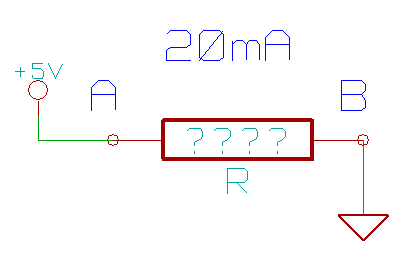Ohms law
Ohm's law is a simple relationship between current, voltage and resistance in an electric circuit.
Ohm’s law :
The current in a circuit is directly proportional to voltage and inversely proportional to resistance .
Notation :
I= current ; V= voltage ; R= resistance
Part of Ohm’s law says that : current is directly proportional to voltage .
If the voltage is increased or decreased in a circuit than the current will increase or decrease in the same amount.
Other part of Ohm’s law says that : current is inversely proportional with resistance .
If the resistance is increased the current from circuit will decrease .
From this definitions we can write this forms :
Form one of Ohm's law: V = I * R To find current and resistance the following forms can be used. They are the same as the above formula but in a different form.
Form two of Ohm's law: Current = Voltage / Resistance or I = V / R
Form three of Ohms Law : Resistance =Voltage / Current or R = V / I
These simple relationships allow us to calculate many things. Given any two of the three values (Current , Resistance , and Voltage) the third can be found.
The most common calculation is for current because the Voltage is easy to measure and the resistance can be found from the resistor (color codes).
Once these values are known, current can be calculated using Form 2 of Ohm’s law, I = V/R.
For example, consider the problem shown in Figure 1. One side is at 0 volts (ground) and the other side is at 5 volts .

The voltage difference between Point A and Point B is 5 - 0 = 5 volts (V=5). There is a resistor between the two points which has a value of 500 ohms (R=500). We know that current flows from a point of high voltage to a point of low voltage so we can draw an arrow from the higher voltage to the lower voltage.
Now we can find the current flowing through the resistor using Form 2 of Ohm's Law I = V / R
V / R = 5 / 500 => 5 / 500 = 0.01 Amps =>0.01 Amps = 10 milliAmps
This means the current is 10 mA. ( I = 10mA )
Now to check our answer we can use Form 1 and Form 3 of Ohm’s law. We have to use the value of current in Amps for these forms. So if we have I = 0.01 Amps and Resistance = 500 ohms then by using Form 1 of Ohm’s law we can find:
Voltage = I * R
I * R = 0.01 * 500 =>0.01 * 500 = 5 volts
This is the voltage we started with so the value we found for the current must be right.
We can also check the answer with Form 3 by using I = 0.01 Amps and V = 5 volts.
Resistance = V / I
V / I = 5 / 0.01 =>5 / 0.01 = 500 ohms.
Now suppose we have two points with a voltage difference of 5 volts. Point A is at 5 volts and Point B is at 0 volts (ground) and we want a current to flow between Points A and B and we want the current to be 0.02 Amps ( I = 0.02 Amps = 20mA).
Now we need to find the value of the resistor so we use Form 3 of Ohm’s Law.
Resistance = Voltage / Current or R = V / I
V / I = 5 / 0.02 = 250 ohms
This means that putting a resistor with a value of 250 ohms between Points A and B will make a current flow from Point A to Point B and the current will be 0.02 Amps (20 mA). Now using the values of voltage and resistance, check the value of the current using Form 2 of Ohm’s law.




Add new comment